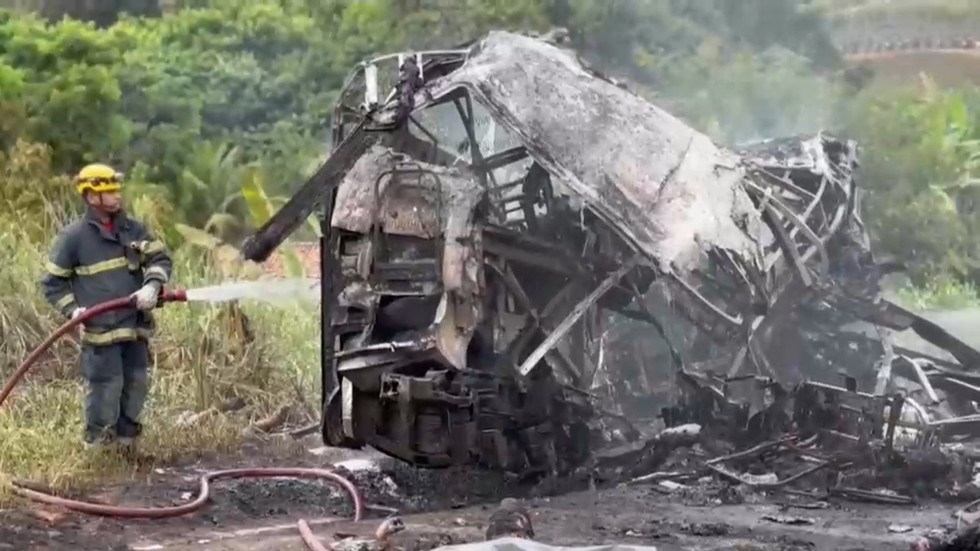On Saturday, a devastating road traffic accident occurred in the state of Minas Gerais, Brazil, resulting in the tragic deaths of at least 38 people when a crowded bus collided with a truck and subsequently erupted in flames. Local officials reported that the passenger bus had been traveling from Sao Paulo with a total of 45 people on board when it suffered a blown tire, leading the driver to lose control and crash. Rescue teams confirmed that the fire department had to transport another 13 individuals to nearby hospitals in Teofilo Otoni due to the severity of their injuries. While the accident was catastrophic, it could have been worse; another car collided with the bus, but its three passengers somehow survived the incident.
Witness accounts suggest that the crash may have been caused by a granite block striking the bus before the collision with the truck. This detail highlights the chaotic nature of the incident, and officials are now tasked with piecing together the exact sequence of events. A forensic investigation is planned to clarify discrepancies in the eyewitness reports and determine the definitive cause of the accident. The inclusion of varying accounts from witnesses indicates the complexity and confusion surrounding the tragedy, which has escalated the urgency for a thorough examination of the circumstances leading to such a large loss of life.
In the wake of this catastrophic event, Brazilian President Luiz Inacio Lula da Silva took to social media to express his condolences and extend prayers to the victims’ families. He emphasized that federal authorities were prepared to offer any necessary assistance and were available to support the state where the accident took place. Lula’s heartfelt message conveyed both grief and a commitment to helping those affected by the tragedy, illustrating the government’s acknowledgment of the profound impact such accidents have on communities and the nation at large.
The impact of road traffic accidents in Brazil is significant, with United Nations data indicating that, as of 2021, the country had an estimated road traffic death rate of 15.7 per 100,000 people. In response to the alarming rates of fatalities, Brazilian authorities have set ambitious goals aimed at reducing the number of road deaths by half by the end of the decade. This initiative is part of a broader effort to save an estimated 86,000 lives from 2021 to 2030. These plans reflect a growing awareness of road safety concerns and the need for targeted policies to combat traffic-related fatalities.
The recent accident serves as a grim reminder of the ongoing challenges Brazil faces concerning road safety. Accidents on the country’s roads have been a persistent issue, with various factors including vehicle maintenance, driver behavior, and infrastructure contributing to high mortality rates. The government’s proactive stance on road safety indicates a recognition of the obligation to protect citizens and ensure safer travel conditions. This commitment emphasizes the importance of ongoing deliberation regarding traffic laws, driver training, and public awareness campaigns that can play a crucial role in reducing accidents.
As the investigation into the Minas Gerais accident unfolds, the tragedy underscores the urgent need for comprehensive measures to enhance road safety in Brazil. Collaboration between local and federal authorities will be essential in implementing effective strategies to prevent similar incidents in the future. This includes reinforcing the importance of vehicle inspections, improving road conditions, and fostering a culture of safe driving. The loss of life witnessed in this horrific event serves not only as a call to action for government officials but also as a poignant reminder to all stakeholders involved in road transportation to prioritize the safety and well-being of all road users.

